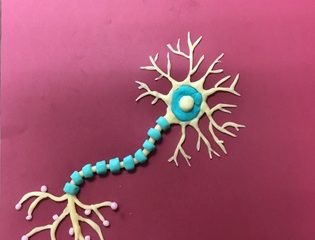Here is what I am reading today:
“…But new Northwestern University research suggests that you did not group your gloves and shoes in a single glance. Instead, you may only be able to see one group at a time, requiring you to take two mental ‘glances’ at your wardrobe.
Intuitively, without any work on our part, our visual systems produce groupings with similar characteristics such as color, shape or motion, said Steven Franconeri, an assistant professor of psychology in the Weinberg College of Arts and Sciences at Northwestern and a co-author of the study.”
“Previous studies on twins and adopted people suggested that there is a substantial genetic contribution to thinking skills, but this new study — published in the journal Molecular Psychiatry — is the first to find a genetic contribution by testing people’s DNA for genetic variations.”
“In both chimpanzees and humans, portions of the brain that are critical for complex cognitive functions, including decision-making, self-awareness and creativity, are immature at birth. But there are important differences, too. Baby chimpanzees don’t show the same dramatic increase in the volume of prefrontal white matter in the brain that human infants do.”
“The study, “Cleared for Takeoff? CEO Personal Risk-Taking and Corporate Policies,” documents a link between the personality traits of high-flying executives and business moves such as mergers, acquisitions and accumulation of debt. The study is co-authored by Stephen McKeon, an assistant professor of finance at the UO’s Lundquist College of Business; and Matthew Cain, an assistant professor of finance at Notre Dame’s Mendoza College of Business.”
“If you see this lady turning clockwise you are using your right brain.
If you see her turning anti-clockwise, you are using your left brain.
Some people can see her turning both ways, but most people see her only one way.”
“It seems we do, at least according to the results of a study by a team of Johns Hopkins University psychologists. Led by Melissa Libertus, a post-doctoral fellow in the Department of Psychological and Brain Sciences at the Krieger School of Arts and Sciences, the study — published online in a recent issue of Developmental Science — indicates that math ability in preschool children is strongly linked to their inborn and primitive “number sense,” called an “Approximate Number System” or ANS.”



